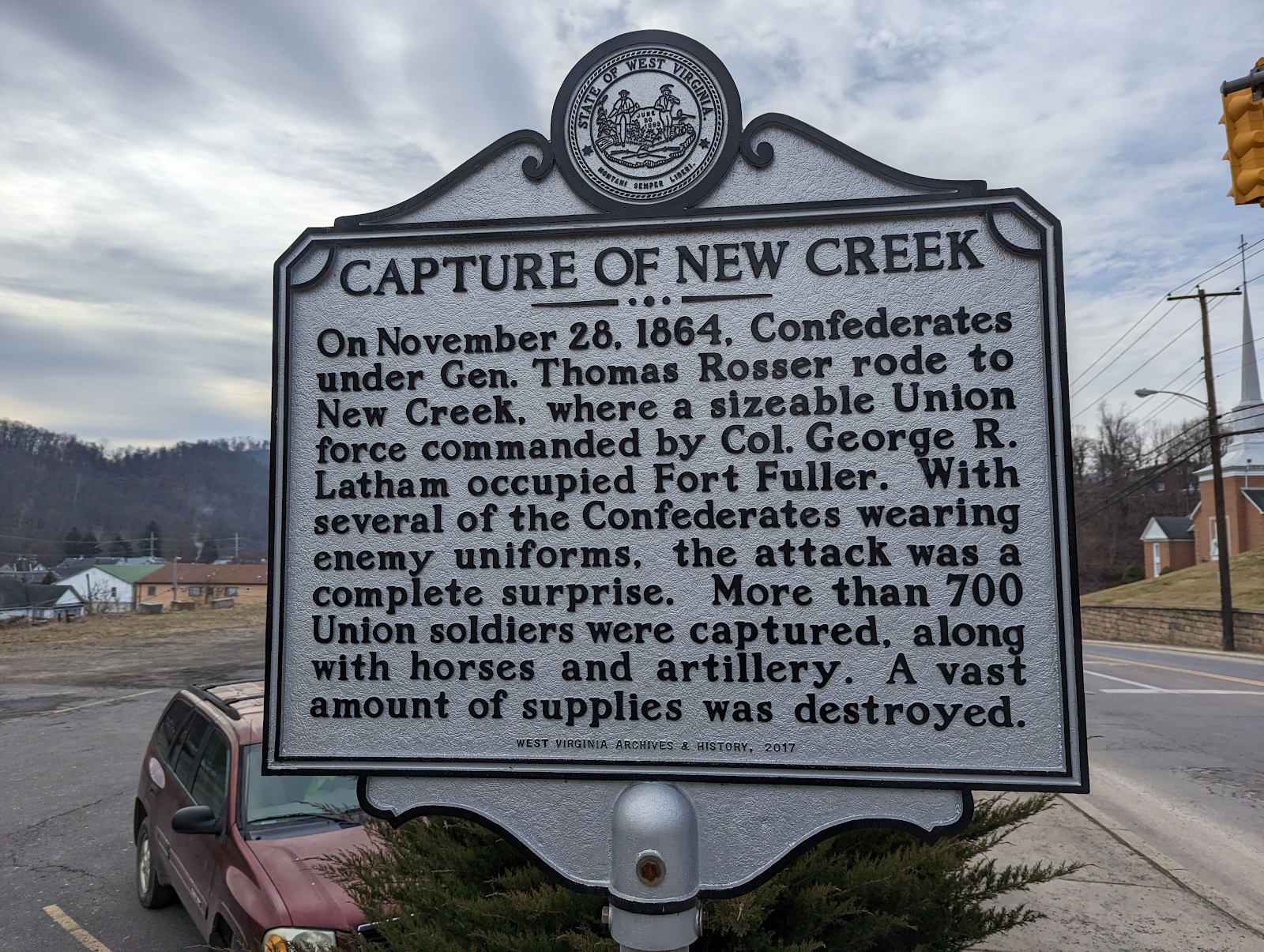May 29 - June 1, 1861 - Battle of Aquia Creek
PhilippiMay 29, 1861 - June 1, 1861
Battle of Aquia Creek
Stafford County, Virginia
Union Navy gunboats: USS Thomas Freeborn of the Federal Potomac Flotilla under Commander James H. Ward, then with the USS Anacostia and USS Resolute, then with USS Pawnee
vs
Confederate shore batteries on the Potomac River under Captain William F. Lynch of the VA State Navy
* "First significant battle of the Civil War between the U.S. Navy and batteries of the Rebel State."
* "Site of one of the war’s earliest military engagements"
* "Each side inflicted little damage and no serious casualties on the other. The Union vessels were unable to dislodge the Confederates from their positions or to inflict serious casualties on their garrisons or serious damage to their batteries. The Confederates manning the batteries were unable to inflict serious casualties on the Union sailors or cause serious damage to the Union vessels. "
* A few days later Commander Ward becomes the first US Navy officer killed during the Civil War, while supporting a landing part at nearby Mathias Point in King George County, VA
* Is this why we call Philippi the first LAND battle?
 |
| Walker's Battery Gun Emplacement |
 |
| https://www.hmdb.org/m.asp?m=2249 |
 |
| https://www.hmdb.org/m.asp?m=2201 |
 |
| Awesomely preserved rebel batteries on the high ground in VA |
 |
| The trail up to the high ground |
One of my favorite things to read on a historical marker: "to learn more follow the trail..." :)
 |
| Modern view of Aquia Creek, slightly inland |
"On April 22, 1861, Governor John Letcher of Virginia gave Robert E. Lee command of Virginia State forces with the rank of major general.[3] General Lee dispatched Captain William F. Lynch of the Virginia state navy to examine the defensible points on the Potomac River, and to take measures for the establishment of batteries to prevent Union vessels from navigating that river.[4] On April 24, 1861, Major Thomas H. Williamson of the Virginia Army engineers and Lieut. H. H. Lewis of the Virginia Navy examined the ground at Aquia Creek,[note 3] and selected Split Rock Bluff as the best point for a battery, as the channel there could be commanded from that point by guns of sufficient caliber."
On April 27, 1861, President Lincoln ordered the Union blockade of the Confederacy extended to the coasts of Virginia and North Carolina since those states were already in the process of joining the Confederate States of America.[6] Both the Union and Confederacy then wanted to deny use of the Potomac River to the other side.
On May 8, 1861, Major Williamson began construction on fortifications at the Aquia Creek landing, mainly to protect the terminus of the Fredericksburg and Potomac Railroad, which had its northern terminus at the landing, from seizure by Union Army forces.[7] About May 14, 1861, Captain Lynch and Lieutenant Lewis, along with Commander Robert D. Thorburn and Lieutenant John Wilkinson of the Virginia State Navy, had erected at Aquia a battery of thirteen guns to protect the railroad terminal.[5] The battery also was a threat to close the navigation of the Potomac River in line with the original mission to site guns to command the river.[8] On May 10, 1861, Confederate authorities appointed General Lee to command Confederate troops in Virginia.[9] Brigadier General Daniel Ruggles assumed overall command of the batteries although they remained under the immediate command of Captain Lynch at Aquia
The Confederate battery at Aquia Landing was first spotted by the USS Mount Vernon on May 14, 1861, but the Mount Vernon made no attack on the position.[7] Since the first battery at Aquia was at the river level and intended mainly to protect the railroad terminal, the Confederates strengthened defenses at Aquia before May 29, 1861 by the addition of a second battery atop the bluffs to the south of the confluence of the Aquia Creek with the Potomac River as originally selected by the scouting party.
On May 29, 1861, a converted 250-ton paddle-wheel steamer mounting 3 guns,[12] the USS Thomas Freeborn of the Federal Potomac Flotilla under the command of Commander James H. Ward[10] attacked the Confederate batteries at Aquia to little effect.[7][13] Confederate Captain Lynch reported that the Thomas Freeborn fired 14 shots and only wounded one man in the hand.[8] On the following day, May 30, 1861, the Thomas Freeborn returned with the USS Anacostia, a 200-ton vessel with 2 guns, and USS Resolute, which was half the size of the Anacostia, and engaged the Confederate batteries for several hours, again with little effect.[7][14] The largest guns of the squadron were 32-pounders.[12] On June 1, the Thomas Freeborn, Anacostia, Resolute, and the sloop-of-war USS Pawnee bombarded the batteries for almost 5 hours, firing over 500 rounds.[15][16] Captain Lynch reported no deaths or injuries from the second and third days of shelling, only the death of a chicken and a horse.[7][17] Lynch added that his works sustained some damage, houses in the rear were "knocked about" and the railroad was torn up in three or four places.[17] Lynch said that he returned fire sparingly in order to save ammunition and because he could fire only when the ships came in view and range of his embrasures as the big guns could not be turned.[17][note 4] Nonetheless, during the fight both the Thomas Freeborn and the Pawnee took minor damage from the batteries and required repairs.[15][17] No Federal sailors were seriously wounded or killed.[15][17]
 |








Comments
Post a Comment